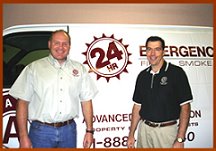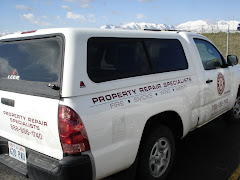You wouldn't expect your brand new home to make you sick but, according some Florida homeowners that is exactly what happened. The CPSC has received about 2,091 reports from residents in 32 states. Homeowners in Florida, Louisiana, Virginia, Alabama, Mississippi as well as many other states and U.S. territories that had homes built between 2006 - 2007 have complained of several health problems, itchy eyes and skin, asthma attacks, persistent cough and bloody noses. They have also complained of a "rotten egg" smell in their home, electrical wire failure, and metal fixtures and copper tubing turning black.
Drywall made in China is believed to be the source of the problem. High levels of hydrogen sulfide have been found in homes built with this particular drywall. If you believe you have contaminated drywall you should contact your state and local health department. The CPSC has not advised whether or not to take certain steps to test and remove the contaminated drywall. But warn homeowners to be cautious of persons or businesses advertising testing and remediation services. There may be unqualified or dishonest individuals seeking to take advantage of consumers struggling to address this issue. You should consult your State and local authorities if you have any questions or concerns about contractors or testing companies promising solutions to these drywall matters.
According to the CDC you should watch for potential electrical hazards in you home
Power outages - a circuit breaker which needs resetting frequently without any apparent cause; especially if a ground-fault circuit interrupter (GFCI) or arc fault circuit interrupter (AFCI) trips frequently. Arc-fault circuit interrupters are a special kind of circuit breaker that is designed to detect arcing conditions in the electrical wiring.
Dim/flickering lights - lights dim often without any specific cause, such as the air conditioner or the refrigerator turning on.
Arcs/sparks - bright flashes or showers of sparks anywhere in your electrical system.
Sizzles/buzzes - unusual sounds from electrical system devices.
Overheating - parts of your electrical system, such as switch plates, dimmer switches, receptacle outlet covers, cords and plugs may be warm as a normal consequence of their operation but should not be discolored from heat or painful to touch.
Odors - pungent smells such as strong fumes from overheating plastic or electrical insulation materials.
Electrical shocks - any shock, even a mild tingle.
Multiple symptoms would be a stronger indication of problems.
For more information please go to http://www.cpsc.gov/info/drywall/index.html

Pictures are from the CPSC Report





